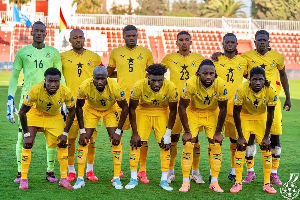Nankese (E/R), Aug. 30, GNA - A Survey conducted by the Ghana National Education Campaign Coalition (GNECC) has revealed that public schools received less than the 30,000 cedis capitation grant per child due to deductions made at the various stages.
The research, conducted in six regions across the country, proved that sometimes the schools got only GH(2.20 (22,000 cedis) as the grant per child for the year.
The study was conducted in the Central, Western, Brong-Ahafo, Upper West, Northern and the Eastern regions in the 2005-06 academic year. A lecturer at the University College of Education, Winneba, Dr Yaw Ofosu-Kusi, presented the findings at a public forum on the capitation grant at Nankese on Thursday.
The objective of the survey was to gather information on management, challenges and the benefits of the capitation grant to ensure that the concept yielded the intended results. Dr Ofosu-Kusi explained that the reduction on the amount was due to deductions made at the regional and district levels and the levy of transfer cost by the banks before the schools received the money. He said in spite of the inadequacy of the grant, access to education had improved tremendously requiring that government put up more schools.
Dr Ofosu-Kusi stressed the need for capacity building of all school heads to strengthen their management of the capitation grant so that it would be used for its intended purpose. He cited for instance three districts in the Northern region, where the grant was used to purchase items excluded in the School Performance Improvement Programmes thus rendering the running of the schools difficult.
The Birim North District Director of Education, Mr George Diko said after the initial implementation of the capitation grant, many deficiencies such as examination fees were realized. He said another major anomaly that was detected was that since the money was paid according to number of pupils on enrolment, schools with low enrolment in the rural areas tended to have problems with smaller grant.
He said to that end, the conference of district directors of education had sent a proposal to government that the capitation grant should be divided into two categories where 50 percent would be paid universally and the other percentage paid according to number on enrolment.
The Eastern Regional Coordinator of GNECC, Mr Lawrence Batsa said education on the capitation grant had not gone down well with people in the communities, hence the refusal of many parents to pay approved levies apart from the grant. 30 Aug. 07
General News of Thursday, 30 August 2007
Source: GNA












